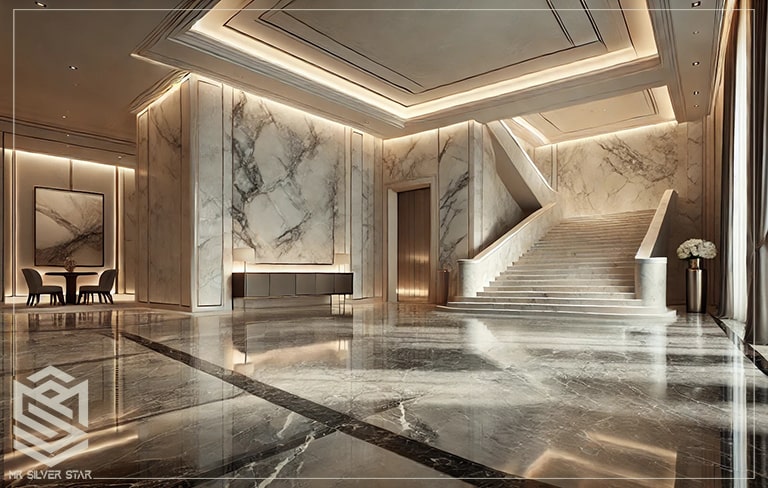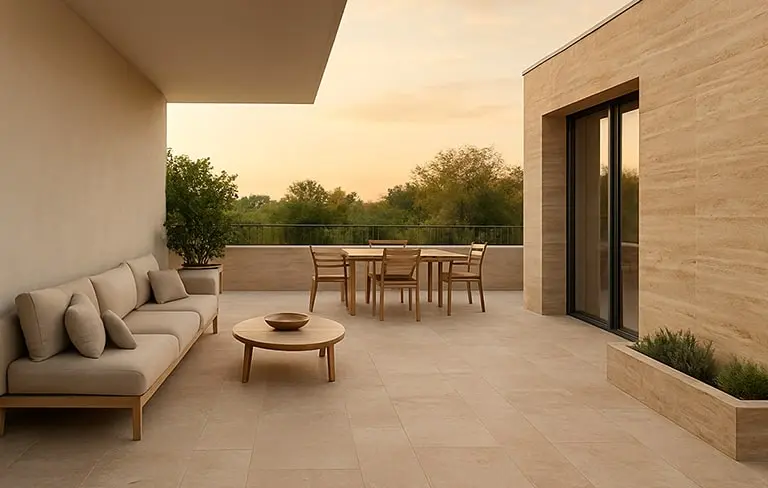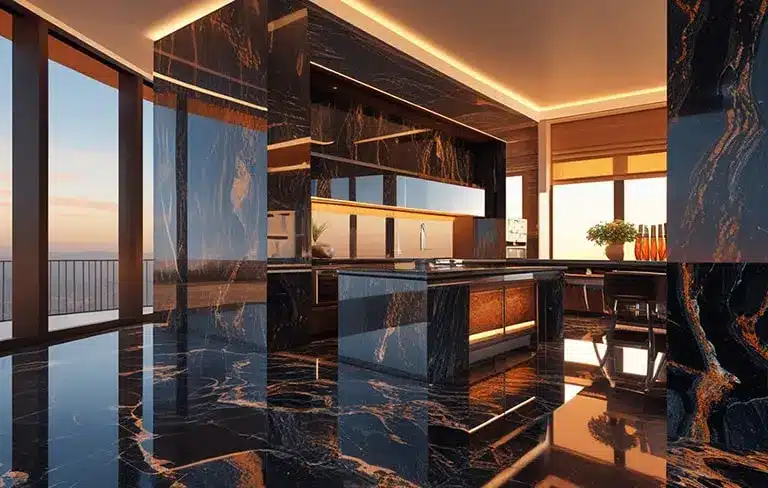
How to Choose the Right Building Stone?
2025-01-29
Everything You Need to Know About Granite Stone
2025-02-04Marble: Features, Applications, and Benefits
Introduction
Marble is one of the most valuable natural stones in the world, renowned for its beauty, durability, and wide range of applications. This stone is formed through the recrystallization of limestone under high temperature and pressure deep within the Earth. In this article, we will explore the characteristics, uses, and advantages of marble.
Characteristics of Marble
Marble possesses unique features that make it one of the most sought-after natural stones:
- Aesthetic Appeal and Color Variety: Marble comes in a wide range of colors, including white, green, pink, gray, and black, enhancing the visual appeal of any space.
- High Polishability and Texture: Its smooth and glossy surface adds a luxurious touch to interiors.
- Heat Resistance: Due to its crystalline structure, marble can withstand high temperatures, making it suitable for warm environments.
- Moderate Impact and Abrasion Resistance: Although not as hard as granite, marble still offers decent durability.
- Translucency: Some types of marble, especially white varieties, allow light to pass through, creating a unique and elegant effect.
Applications of Marble
Due to its exceptional properties, marble is widely used in various fields of construction and interior design:
- Flooring and Wall Cladding: Its sleek and smooth surface makes it a popular choice for floors and walls.
- Stairs and Railings: Marble stairs not only enhance the aesthetics but also provide long-lasting durability.
- Kitchen Countertops and Islands: Marble countertops are favored for their heat resistance and stain-resistant properties.
- Interior Decoration and Sculptures: Designers use marble to craft sculptures, columns, and luxury decorations.
- Building Facades: High-end buildings often feature marble exteriors for a distinguished and sophisticated appearance.
Benefits of Using Marble
Using marble in construction and interior design offers several advantages:
- Longevity and Durability: With proper maintenance, marble retains its beauty and quality for many years.
- Increased Property Value: Properties featuring marble elements tend to have a higher market value.
- Eco-Friendliness: As a natural material, marble does not harm the environment.
- Wide Selection and Versatility: Available in various colors and patterns, marble suits different architectural styles.
- Easy Maintenance: Cleaning marble is simple, requiring only a damp cloth for routine upkeep.
Disadvantages of Marble
Despite its numerous advantages, marble has some drawbacks:
- Sensitivity to Acids: Acidic substances such as lemon juice and vinegar can cause etching and damage the surface.
- High Cost: Due to expensive extraction and processing, marble is a costly material.
- Requires Regular Maintenance: To maintain its shine and elegance, marble needs consistent care.
Conclusion
Marble remains a highly sought-after natural stone due to its beauty, variety, durability, and numerous applications in architecture and interior design. Although it requires proper maintenance and comes at a high price, its aesthetic and functional benefits make it a worthwhile investment for both residential and commercial projects.






